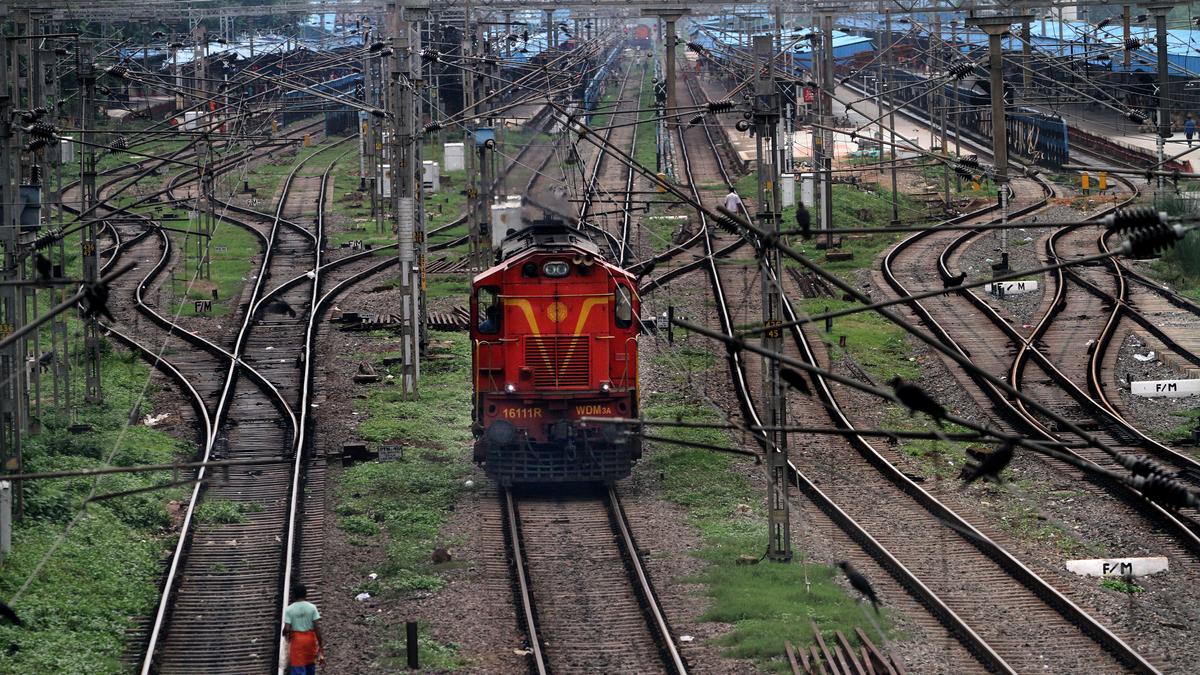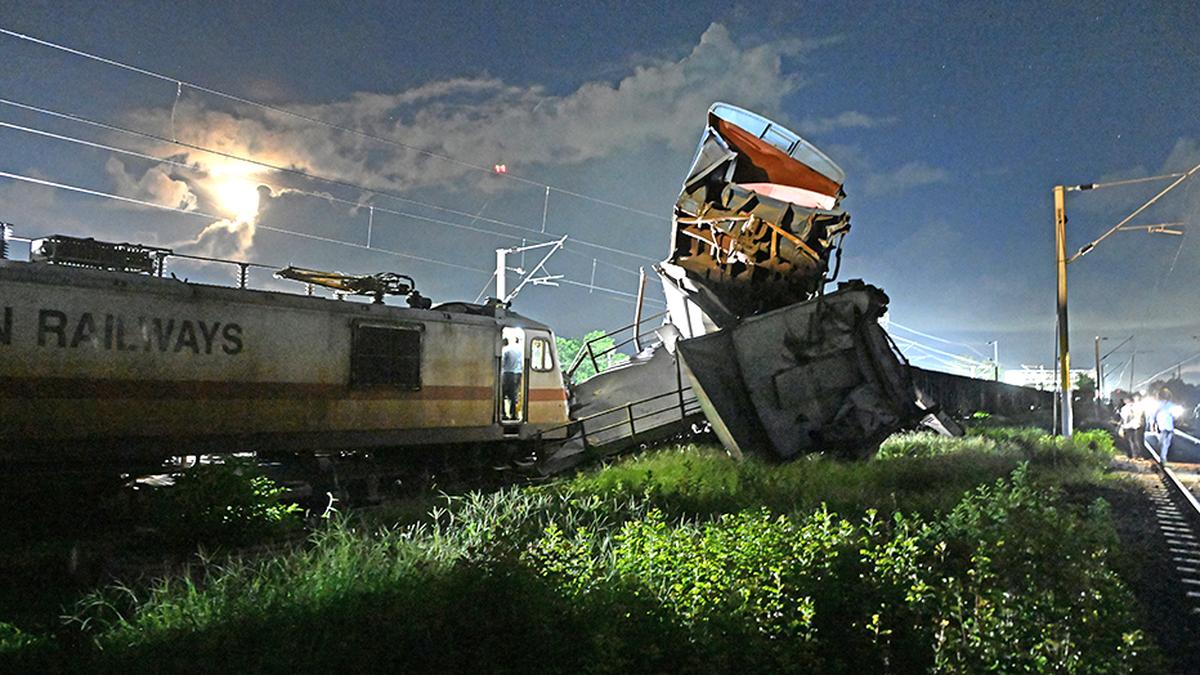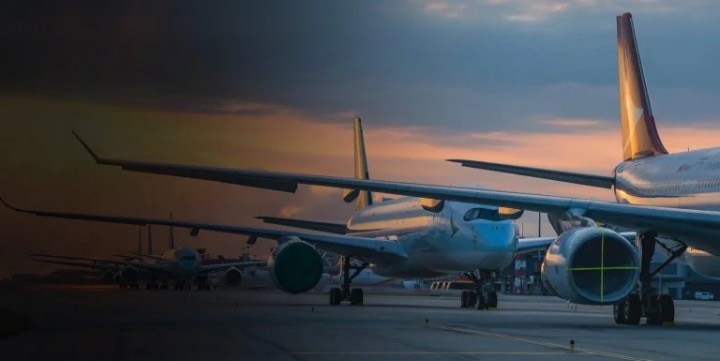The Costly Push for 100% Electrification of Indian Railways

- 19 Dec 2024
Introduction
RITES Ltd., the consultancy arm of the Indian Railways, has secured two contracts to repurpose six broad gauge diesel-electric locomotives for export to African railways. These locomotives, originally designed for India’s broad gauge of 1,676 mm, will be modified for use on railways with the narrower Cape Gauge of 1,067 mm. While this is a commendable re-engineering effort, it also highlights a larger issue within Indian Railways: the unnecessary redundancy of functional diesel locomotives, leading to significant wastage of resources.
The Growing Problem of Idle Diesel Locomotives
As of March 2023, there were 585 diesel locomotives idling across the Indian Railways network due to electrification. This number has now reportedly grown to 760 locomotives, many of which still have more than 15 years of serviceable life. The root cause of this redundancy lies in the government’s mission to electrify the entire broad gauge network at an accelerated pace. This electrification push has resulted in the premature retirement of locomotives that could still serve the network for years, raising questions about the economic and environmental logic behind this decision.
The Justification for Electrification: Foreign Exchange and Environmental Concerns
The Indian government’s electrification drive is often justified on two primary grounds: saving foreign exchange by reducing the import of crude oil and reducing environmental pollution. Additionally, electrification is framed as a step toward a “green railway” powered by renewable energy sources like solar and wind. However, the reality of these claims is more complicated.
Foreign Exchange Savings: A Small Impact on National Diesel Consumption
While electrification may reduce India’s diesel consumption, the impact on national fuel use is minimal. Railways account for just 2% of the country’s total diesel consumption. A report by AC Nielsen in 2014 indicated that the transport sector consumed 70% of the total diesel, with railways accounting for only 3.24%. Even with 100% electrification, the savings in foreign exchange would have little impact on the country’s overall diesel consumption, leaving other sectors like trucking and agriculture as the main contributors.
Environmental Concerns: Shifting Pollution, Not Reducing It
The environmental argument for electrification is also flawed. Electricity in India is still largely generated from coal-fired power plants, with nearly 50% of the country’s electricity coming from coal. Since the Indian Railways is heavily involved in transporting coal, switching from diesel to electric locomotives simply shifts pollution from the tracks to the power plants. This means that the transition to electric traction will not result in a cleaner environment unless the country significantly reduces its reliance on coal. Without a substantial increase in renewable energy generation, the push for a “green railway” remains unrealistic.
The Dilemma of Retaining Diesel Locomotives for Strategic Purposes
Despite the goal of 100% electrification, a significant number of diesel locomotives will remain in service. Reports indicate that 2,500 locomotives will be kept for “disaster management” and “strategic purposes,” although it is unclear why such a large fleet is necessary for these purposes. Additionally, about 1,000 locomotives will continue to operate for several more years to meet traffic commitments. This suggests that even with a fully electrified network, Indian Railways will continue to rely on thousands of diesel locomotives, many of which have substantial residual service life left.
Financial Sustainability and Coal Dependency
The financial sustainability of this transition remains a concern. Currently, the Indian Railways generates a significant portion of its freight revenue from transporting coal—40% of its total freight earnings in 2023-24. If the railways become fully electrified, it will need to find alternative revenue sources, as coal is a primary contributor. Until non-coal freight options can replace this income, the financial health of the railways may be at risk.
Conclusion: Wasted Resources and Unmet Goals
The mission to electrify the Indian Railways, while ambitious, is an example of how vanity projects can lead to colossal waste. Thousands of diesel locomotives are being discarded prematurely, despite their potential to continue serving the network. The environmental and financial justifications for 100% electrification, while appealing in theory, fail to account for the complexities of India’s energy landscape. As a result, the drive to create a “green railway” is likely to fall short, leaving behind a legacy of wasted taxpayer money and unfinished goals.
India’s Urban Infrastructure

- 28 Nov 2024
Introduction
India’s urban population is projected to double from 400 million to 800 million by 2050. This demographic shift presents both challenges and opportunities for transforming the country’s urban infrastructure. To meet the growing needs of urban areas, India will require an investment of approximately ?70 lakh crore by 2036, a figure significantly higher than current spending levels.
Financial Challenges in Urban Infrastructure
- Investment Gap
- The current annual investment in urban infrastructure stands at ?1.3 lakh crore, which is only 28% of the ?4.6 lakh crore needed annually.
- A large portion of the existing investment, around 50%, is directed towards basic urban services, with the remainder allocated to urban transport.
- Municipal Finances
- Municipal finances have remained stagnant at 1% of GDP since 2002.
- Despite increased transfers from the central and state governments, municipal bodies face financial strain.
- The contribution of municipal own-revenue has decreased from 51% to 43%, indicating a reduced financial independence.
- Revenue Collection Inefficiencies
- Urban local bodies (ULBs) are collecting only a small fraction of their potential revenues, with property tax collections representing just 0.15% of GDP.
- Cost recovery for essential services like water supply and waste management ranges between 20% and 50%, pointing to a significant funding gap.
- Underutilization of Resources
- Cities like Hyderabad and Chennai utilized only 50% of their capital expenditure budgets in 2018-19.
- Central schemes such as AMRUT and the Smart Cities Mission also showed suboptimal fund utilization, with utilization rates of 80% and 70%, respectively.
- Decline in Public-Private Partnerships (PPPs)
- Investments through PPPs in urban infrastructure have seen a sharp decline, from ?8,353 crore in 2012 to ?467 crore in 2018.
- This drop is attributed to limited project-specific revenues and inadequate funding mechanisms.
Structural and Administrative Challenges
- Weak Governance and Fragmented Management
- Fragmented governance and limited administrative autonomy hinder effective urban planning and resource allocation.
- Municipal bodies often lack the ability to undertake long-term planning and project execution due to these governance challenges.
- Climate Vulnerability and Sustainability: Urban areas are increasingly vulnerable to climate risks like floods and heatwaves. However, many urban infrastructure projects fail to incorporate climate resilience in their planning, exacerbating the long-term vulnerability of investments.
- Inadequate Land Management
- There is poor coordination between land use planning and infrastructure development, resulting in urban sprawl and inefficient transportation systems.
- Opportunities to capitalize on the land value generated by metro and rail projects remain underutilized.
Measures for Transforming Urban Infrastructure
- Streamline Revenue Collection: Leverage technology to improve property tax collection systems and enhance cost recovery in essential services.
- Enhance Fund Utilization: Strengthen municipal capacities for effective project planning and incentivize the timely use of allocated grants.
- Scale Public-Private Partnership (PPP) Investments: Develop a pipeline of bankable projects and create risk-sharing mechanisms to attract private sector investments.
- Decouple Project Preparation from Funding: Ensure that infrastructure projects are thoroughly prepared for financial, social, and environmental sustainability before seeking funding.
- Promote Urban Innovation: Establish urban innovation labs and encourage public-private-academic collaborations to foster the adoption of advanced technologies.
- Empower Municipalities: Grant municipalities greater financial autonomy, enabling them to raise capital through municipal bonds and other debt mechanisms.
- Integrated Urban Planning: Align infrastructure development with land use, transport, and housing requirements, while integrating climate resilience into planning.
- Capacity Building: Invest in the training of municipal staff to improve governance and financial management capabilities.
Conclusion
India’s expanding urban population presents a major opportunity for economic growth. However, addressing the financial and structural challenges in urban infrastructure is crucial for harnessing this potential. By adopting a combination of short-term actions, medium-term strategies, and long-term reforms, India can create sustainable, resilient urban infrastructure that meets the growing needs of its cities, fostering inclusive development and long-term prosperity.
What are the stress factors for Indian Railways?

- 22 Oct 2024
In News:
On October 17, eight coaches of the Agartala-Lokmanya Tilak Express derailed in Assam with no casualties. On October 11, a passenger train rear-ended a stationary goods train near Chennai, also with no casualties. Indian trains have been involved in multiple accidents of late. The Balasore accident on June 2, 2023, had the greatest death toll, more than 275, yet pressure on the Railways to improve safety competes with pressures straining its subsistence.
Railway Accident Trends
- Decline in Accidents Over Time:
- From 1,390 accidents per year in the 1960s, railway accidents have reduced to about 80 accidents per year in the last decade.
- Recent Consequential Accidents:
- 34 accidents in 2021-2022
- 48 accidents in 2022-2023
- 40 accidents in 2023-2024
- Primary Causes of Accidents:
- 55.8% due to staff errors (railway personnel).
- 28.4% due to non-staff errors.
- 6.2% due to equipment failure.
- Role of Signalling Failures:
- Major accidents, such as Balasore and Kavaraipettai, were attributed to signalling system failures.
Key Safety Technologies and Measures
- Kavach System:
- Kavach is an automatic train protection system designed to prevent collisions by monitoring train positions and activating alarms or braking.
- As of February 2024, Kavach was implemented on only 2% (1,465 route km) of the railway network, limiting its effectiveness.
- Signalling System Overhaul:
- Outdated and faulty signalling systems contribute significantly to accidents. Both Balasore and Kavaraipettai incidents were linked to failures in signalling infrastructure.
Financial Strain on Indian Railways
- Operating Ratio (OR):
- The Operating Ratio (OR) in 2024-2025 is estimated to be ?98.2, indicating that the Railways spends ?98.2 for every ?100 earned.
- A higher OR reduces available funds for safety improvements and infrastructure upgrades.
- Budgetary Constraints:
- The 2023-24 budget showed a 7.2% reduction in capital outlay for track renewal and a 96% decrease in the Depreciation Reserve Fund, which is used to replace aging assets.
- Revenue Imbalance:
- Freight services account for 65% of Railways’ revenue but face capacity constraints, with 30% of the network operating at over 100% capacity.
- Passenger services, however, continue to incur significant losses, with ?68,269 crore loss in 2021-22.
Challenges in Rail Infrastructure
- Slow Infrastructure Development:
- The government's Dedicated Freight Corridors (DFCs), intended to alleviate congestion, are severely delayed:
- The Eastern DFC is the only fully operational corridor.
- Other corridors, including the Western DFC and additional planned routes, remain incomplete.
- Track and Equipment Maintenance:
- Ongoing delays in upgrading and maintaining essential infrastructure (tracks, wagons, signalling) contribute to the rising number of accidents.
Loco Pilot Working Conditions
- Extended Working Hours:
- Loco pilots often work 12-hour shifts due to manpower shortages, leading to fatigue and increased risk of human error.
- Stress and exhaustion are significant contributors to accidents caused by human error, including Signal Passed at Danger (SPAD).
Recommendations for Improving Railway Safety
- Loco Pilot Vacancies:Immediate recruitment to fill the 18,799 vacant loco pilot positions to prevent overworking and reduce fatigue-related errors.
- Expand Kavach Deployment:Accelerate the nationwide installation of the Kavach system, particularly on high-risk and high-traffic routes, to enhance safety.
- Complete Dedicated Freight Corridors (DFCs):Expedite the completion of DFCs to ease congestion and increase freight movement efficiency.
- Independent Railway Safety Authority:Establish an independent Railway Safety Authority with statutory powers, as recommended by the Kakodkar Committee (2012), to enforce safety standards and monitor implementation.
- Improve Signal Infrastructure:Invest in advanced and reliable signalling systems to prevent errors stemming from outdated or malfunctioning infrastructure.
- Regulate Working Hours:Enforce strict work hour limits to reduce fatigue among railway staff and ensure proper rest between shifts.
- Strengthen Trackside Infrastructure:Install fencing along tracks in high-risk areas to prevent cattle run-overs, a common cause of derailments in rural and semi-urban areas.
Conclusion
- Indian Railways faces a complex set of challenges, balancing safety requirements with financial constraints. Despite technological advancements like Kavach, its limited deployment and outdated infrastructure continue to present significant risks.
- A holistic approach to reform is needed, including addressing manpower shortages, upgrading safety technologies, and investing in infrastructure development. This will be essential for reducing accidents, improving safety, and ensuring the long-term sustainability of India’s vast railway network.
Indian Aviation, A Case of Air Safety at a Discount

- 09 Apr 2024
Why is it in the News?
The government introduced revised Flight Duty Time Limitations (FDTL) Regulations, set to be implemented on June 1, 2024, but faced opposition from airline owners, prompting the DGCA to indefinitely defer the deadline.
Context:
- The aviation sector in India faces a pivotal moment, balancing rapid growth with pressing safety issues.
- The remarks from the Union Minister and the DGCA, highlighting safety as paramount, seem at odds with ongoing safety lapses.
- Given the significance of safety measures, it's imperative to examine safety protocols, parameters, challenges, and regulatory shortcomings.
Key Provisions in the Revised FDTL Regulations of January 2024:
- Extended Weekly Rest Periods for flight crew: The revised regulations mandate increased weekly rest periods from 36 hours to 48 hours for flight crew, thus ensuring sufficient time for recovery from cumulative fatigue.
- Night Duty: The definition of night has been amended, and it now covers the period of 0000-0600 hours in the revised regulations vis-à-vis the period of 0000-0500 hours under the previous regulations.
- This enhancement of one hour during the early morning will ensure adequate rest and also align the night duty period, which encompasses the Window of Circadian Low (WOCL) from 0200-0600 hours, i.e. the time during which the circadian body clock cycle is at its lowest in terms of alertness.
- Maximum Flight Time, Maximum Flight Duty Periods, and Number of Landings during Night: The revised regulations have taken into consideration different types of operations across time zones.
- The maximum flight time & maximum flight duty period for flight operations encroaching night have been restricted to 8 hours flight time & 10 hours flight duty period, respectively, and the number of landings has been limited to only two landings as compared to the maximum permissible 6 landings under previous regulations during night operations, thus enhancing flight safety.
- Quarterly fatigue reports: In addition, DGCA has mandated that all airline operators submit quarterly fatigue reports after analysis, including the Action Taken on such reports.
- Further, it has been stipulated that the fatigue reports shall follow a non-punitive and confidentiality policy.
What is the Fatigue Risk Management System (FRMS)?
- The Directorate General of Civil Aviation (DGCA) is preparing to introduce a novel approach, known as the Fatigue Risk Management System (FRMS), to handle fatigue among flight crew.
- The recent revision of Flight Duty Time Limitation (FDTL) regulations marks the initial phase of FRMS implementation in India.
- FRMS represents a data-driven strategy aimed at enhancing the monitoring and documentation of flight crew fatigue.
- The successful integration of FRMS hinges upon collaborative efforts from various stakeholders within the aviation sector, including regulators, airline operators, and flight crew, who must demonstrate readiness to embrace this new framework.
- This transition necessitates rigorous oversight, meticulous record-keeping, and comprehensive reporting to uphold compliance with the FRMS framework.
The Imperative for Implementing Fatigue Risk Management System (FRMS):
- The International Civil Aviation Organization (ICAO) has mandated the adoption of the Fatigue Risk Management System (FRMS) to address safety concerns.
- Extensive analysis of accidents and serious incidents attributed to fatigue has underscored the critical role of adequate rest and sleep deprivation in impairing pilots' reaction times.
- Countries like Japan, Singapore, and the United Kingdom prioritize flight crew fatigue management and emphasize regular rest periods to mitigate cumulative fatigue.
- These nations implement a system where pilots receive two days off each week to reset their circadian rhythm and recuperate from prolonged flying hours, with additional rest upon returning from long-haul flights.
- In contrast, existing Flight Duty Time Limitation (FDTL) regulations afford pilots only 30 days of annual leave and one day off per week, which pales in comparison to the leisure time granted to ground personnel.
- Airline schedules often overlook human performance limitations, neglecting the fact that pilots, like any other individuals, require time with their families.
- Thus, providing two days off per week is essential for maintaining a healthy work-life balance.
Other concerns in the aviation sector:
- Runway End Safety Area (RESA): The absence of RESA at Kozhikode's Karipur airport has sparked warnings from the Minister for Civil Aviation about compromised passenger safety.
- Recommended by the Aircraft Accident Investigation Bureau following a 2020 air crash, the Ministry has threatened to curtail runway length unless land is handed over to the Airports Authority of India (AAI).
- As of April 2024, no land has been provided, and flights remain unrestricted.
- Utilization of Pilots and Adherence to Safety Regulations: While the Directorate General of Civil Aviation (DGCA) sets minimum crew requirements, airlines can opt for lower flight time and duty hours.
- Large aircraft orders often adhere to DGCA Civil Aviation Requirements for scheduled transport, which only specifies the minimum crew requirement.
- The crew requirement would more than double under the Flight Duty Time Limitations (FDTL) CAR, but the DGCA does not monitor crew numbers based on these requirements.
- This is primarily due to the potential impact of positive media coverage and the reputation of India's aviation industry.
- Financial Stress on Pilots: Financial stress has been identified as a contributing factor to aircraft crashes, such as the Silkair crash in 1997 and the Egyptair crash in 1999.
- However, authorities in India often fail to adequately address the dangers of financial stress among pilots.
- A prime example is the recent merger of Vistara with Air India, where Vistara copilots faced a significant pay cut upon losing their command position, leading to increased financial strain.
Way Forward:
- Implementing ICAO Annex 1 Standards: A crucial step towards a more robust aviation sector involves adopting the International Civil Aviation Organization's (ICAO) Annex 1 standards, facilitating the recognition of foreign licenses and issuance of Indian licenses based on specific criteria.
- This streamlined process can attract experienced pilots, addressing shortages and elevating workforce competency.
- Harnessing Retired Pilots' Expertise: Utilizing retired pilots in training roles, particularly within simulator training centers, allows India to tap into their valuable experience and knowledge to mentor the next generation of aviators.
- By addressing training gaps and bolstering proficiency standards, this initiative enhances safety outcomes while supporting the professional growth of aspiring pilots.
- Strengthening Monitoring and Compliance: Regulatory bodies, such as the Directorate General of Civil Aviation (DGCA), should fortify their monitoring mechanisms to ensure adherence to Flight Duty Time Limitations (FDTL) regulations and crew staffing requirements.
- This vigilance aids in identifying instances of non-compliance, mitigating fatigue-related risks, and fostering collaboration with airlines to manage crew resources effectively.
- Cultivating a Safety-Oriented Culture: Promoting a safety culture within the aviation industry is vital for achieving sustainable safety outcomes.
- Stakeholders should prioritize safety initiatives, invest in training programs, and encourage open communication channels for reporting concerns.
- This collaborative approach nurtures a safety-focused environment that benefits all parties and strengthens the overall aviation landscape.
Conclusion
The postponement of fatigue management regulations underscores the complexities of balancing safety concerns with commercial interests within India's aviation industry. To safeguard both flight safety and crew welfare, regulatory authorities must prioritize the implementation of rigorous fatigue management protocols and withstand industry pressures that jeopardize safety standards. It is only through a unified commitment to rectifying regulatory deficiencies and cultivating a culture of safety that India's aviation sector can maintain the utmost standards of flight safety and operational proficiency.
